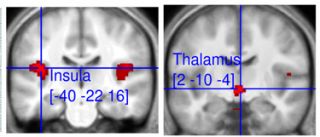Career
Let's Take a Break!
How the brain decides it's time to knock off work
Posted January 24, 2013
A new study, published this week in the Proceedings of the National Academy of Sciences Early Edition, tries to answer the question, “How does the brain decide when it’s time to take a break.”
The research was prompted, says French investigator Mathias Pessiglione, by a gap in the research base. “It was striking,” says Pessiglione, “that the scientific literature in the field of effort and decision-making focuses a lot on binary choices such as, ‘Would you prefer to exert a small effort to get this small reward or to exert a big effort to get this big reward?’ We certainly make these kinds of decisions, but a seemingly more pervasive issue in everyday life is, ‘When shall I take a break, and for how long?’ How the brain solves this issue was totally unexplored.”
To address this unknown, Pessiglione and his colleagues in Paris hypothesized that the accumulation of a particular signal in the brain might trigger the decision to stop working. Its loss or dissipation might trigger resumed work.

To test this hypothesis, the researchers asked 39 volunteers to squeeze a handgrip in exchange for a payment. The payment was proportional to the duration of the effort, i. e. the longer the grip was held, the greater the payment. The investigators used two neuroimaging techniques to record the participants’ brain activity during performance of the task.

These statistical maps show brain regions where activity was significantly correlated with expended effort.
The brain scans disclosed signals being encoded in regions of the brain known to process pain perception, including the posterior insula and ventral thalamus. The level of activity and encoding accumulated during effort. It dissipated during rest. “One interpretation of the dissipation process is that the accumulation is leaky, meaning that the effort is progressively forgotten during rest. Another interpretation is that a control input is subtracted to the sensory input to reset the system,” the authors write.
The study yielded additional insights. Greater task difficulty caused the signal to accumulate more rapidly, but the monetary incentive made a big difference. The signal accumulated more slowly when the monetary reward was greater. It dissipated more rapidly during rest when the reward for resumed effort was greater.
Classical decision theory suggests that, when people ponder whether to do work at a specific point in time, the brain evaluates the costs and benefits of exerting effort. This study suggests a mechanism by which the brain may attempt to maximize benefits while at the same time avoiding exhaustion. “In principle, balancing effort and rest could rely on a signal representing energy dissipation (i.e., the available resource), not cost accumulation (i.e., the expended resource),” the authors write.
The task employed in this study was physical. Tired office workers and stressed students may wonder whether a mental task would produce the same response. “This is actually a very open question that we are addressing now,” says Pessiglione. “The problem is that mental effort is much harder to define and measure. What people usually have in mind is attentional effort: keeping your focus on a hard cognitive task. This has clearly not the same impact on metabolic resources as muscle contraction. So, it is unclear that mental effort exposes your body to exhaustion, just as physical effort does.”
The researchers suggest that the decision to exert an effort is controlled by a signal that accumulates, eventually reaching its bounds. However, “we have not established yet whether the cost evidence signal is related to what we subjectively perceive as fatigue or pain,” the researchers write. Further experiments will address such issues.
For More Information
Florent Meyniel, Claire Sergent, Lionel Rigoux, Jean Daunizeaua, and Mathias Pessiglione. A neuro-computational account of how the human brain decides when to have a break. PNAS Early Edition.
These statistical maps show brain regions where activity was significantly correlated with expended effort and perceived reward.


